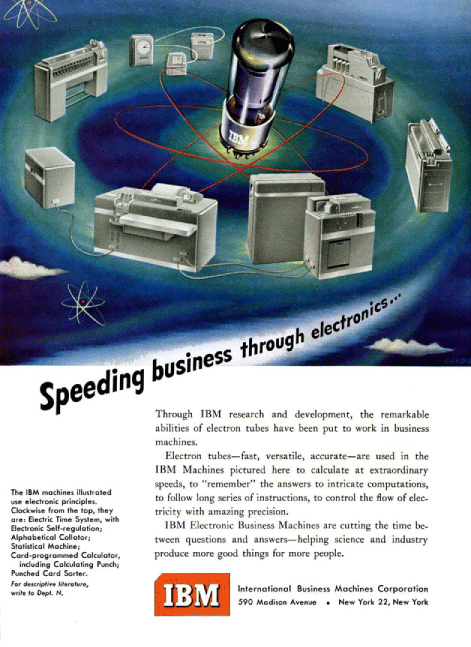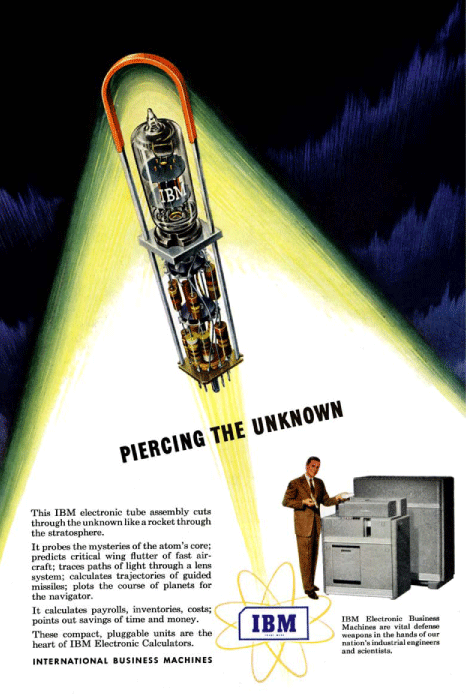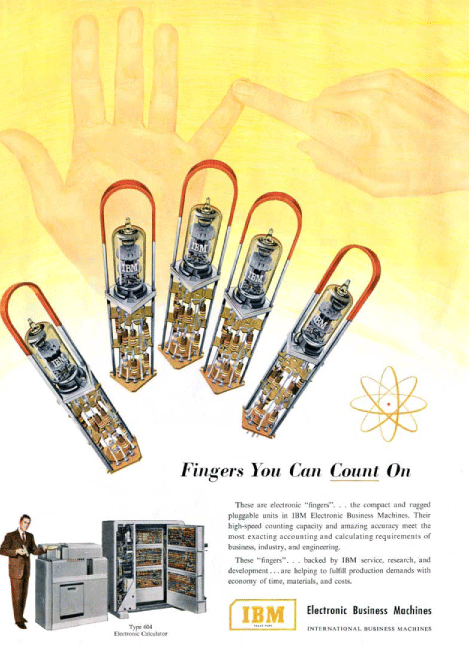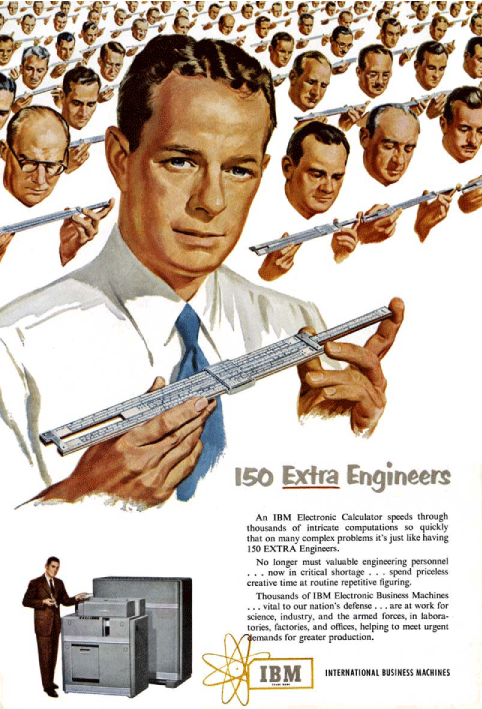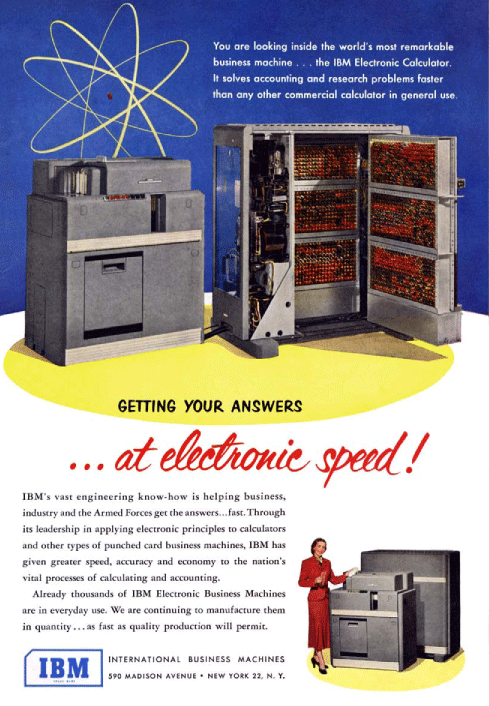The IBM 604 Electronic Calculating Punch
In April, 1997, the Computer Museum has acquired its first (and only) electron tube-based digital machine, the IBM 604 Electronic Calculating Punch. In fact we have only the 604 arithmetic unit (the larger cabinet in the picture to the left), without the card reader/punch. The machine is not in operational condition. Many tubes and some of the cover panels are missing (colour picture, showing the power supply compartment and one of the hinged backplanes).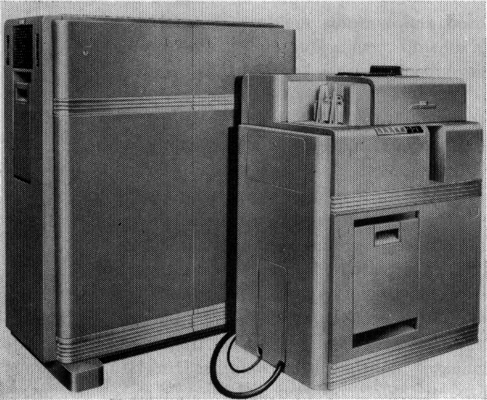
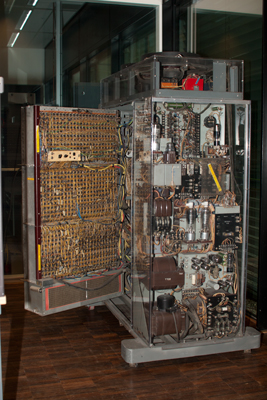
2 * 2 * 1 m, and its weight is 640 kilos. In its basic form the 604 was used with a model 521 card punch/reader (9000 cards/hour) and a read-out panel. To make it useful for technical calculations, the machine was combined with a 402 or 417 electronic accounting machine for printing and one to three type 941 auxiliary memory units; this combination was successfully sold as the CPC (Card-Programmed Electronic Calculator). In the period 1948-1958, about 5600 604 units were produced. You could rent the 604/521 installation for $645 (1948 dollars) per month. The machine was built in series production for the European market in IBM's Amsterdam factory.
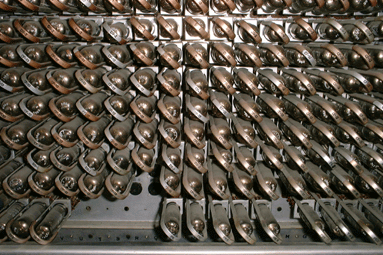
Basic 604 instruction set:
- storage read in
- storage read out
- multiplier quotient read in
- multiplier quotient read out
- counter read in plus
- counter read in minus
- counter read out and reset
- multiply plus
- multiply minus
- divide
- one-half adjust
- zero test for step suppression
- column shift
- sign test for step suppression
- group suppress
- program repeat
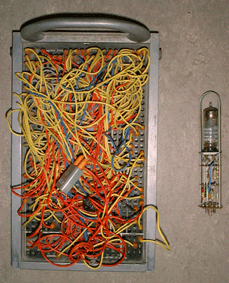
A different patching of the control panel would allow floating-point operations (using 10 digits for each number). On the extended version of the 604, the CPC, really complex problems could be solved, like finding the roots of a seventh degree complex polynomial.
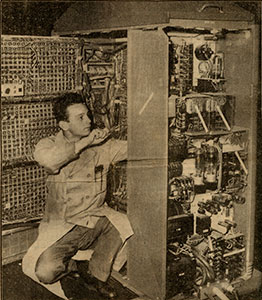
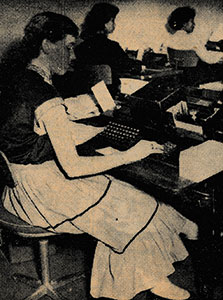
IBM 604 processor maintenance; girl operating a Bull card punch [Volkskrant]
card before 604 processing [Volkskrant]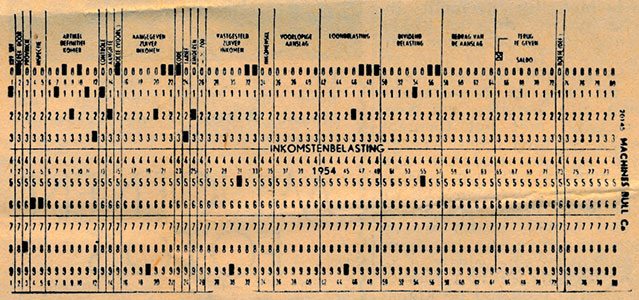
References:
- H.H. Goldstine: The computer from Pascal to Von Neumann. Princeton University Press 1972, 1993
- P.T. Nims: The IBM type 604 electronic calculating punch as a miniature card-programmed electronic calculator. Proc Computation Seminar August 1951 (IBM, 1951) pp 37-47.
- J.W. Sheldon and L. Tatum: The IBM card-programmed electronic calculator. Rev of Electronic Digital Computers, Joint AIEE-IRE Computer Conf. 1952, pp 30-36.
- C.J. Bashe e.o.: IBM's Early Computers. MIT Press 1986.
- 'Speedy business through electronics'
- 'Piercing the unknown'
- 'Fingers you can count on'
- '150 extra engineers'
- 'Getting your answers at electronic speed'
rev October, 2016

